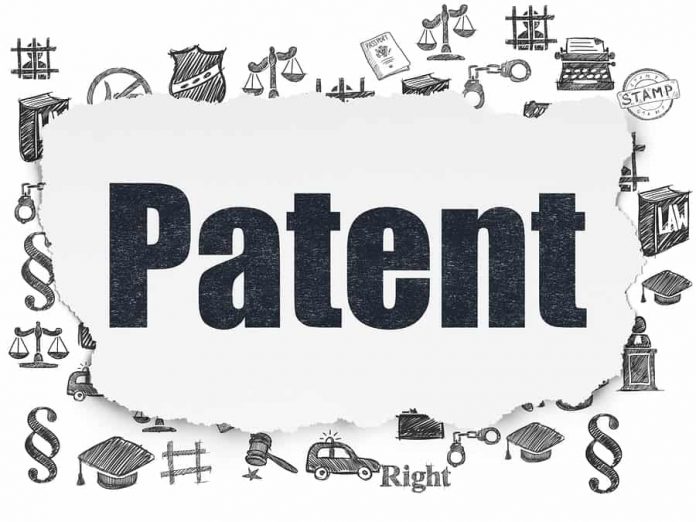This article is written by Pranav Wadhawankar. This article has been edited by Ojuswi (Associate, Lawsikho) and Indrashish.
This article has been published by Sneha Mahawar.
Table of Contents
Introduction
What software and intellectual property have in common is an intangible presence. The software is the set of instructions that collectively run the code of the operating hardware which executes the function. Software is different from other traditional intellectual property forms as they are intangible assets. When software is sold, unlike other traditional common goods, the customer gets a licence to use the specific software along with some other specific rights that tell the licensee what to do and what not to do.
Software patents in India mostly resonate with computer programs, algorithms, logarithms, etc. In software patents, the person who makes the code that provides the instruction or the customer who buys it, the IP of that software resides with them. Patents are filed for innovations touching on computer programs, software programs, and mobile functions to shield the novel and resourceful elements of such innovations from being copied by competitors. Software Patents in India are granted for embedded software programmes in cellular applications and/or software plus hardware combinations.
India has adopted multinational agreements like TRIPS, Berne Convention, WIPO, etc. and has also integrated laws on the safeguard of IP of software. The primary statutes governing software protection in India are the Copyrights Act, 1957, and the Patents Act, 1970. This article focuses on the evolution of the regime of software patenting in India.
Software patents
Patents that are linked to technology but have no relation to hardware are usually classified as software patents. An invention means “a new product or process involving an inventive step and capable of industrial application.” Such innovation is directed to be patented as per Section 2(j) of the Indian Patents Act, 1970 (hereinafter referred to as the Act). Whereas “computer programs” are excluded from the category of being patented under Section 3 (k) of the Act. The said section is a barrier that makes it hard to protect software that has to do with computers. Regardless of section 3 (k), there exist circumstances under which software can be patented in the Indian regime. The computer programme has to pass a certain test before it qualifies for a patent grant. It should possess qualities such as:
Novelty or non-obviousness
In order to be patentable, an invention must be novel or non-obvious. A new idea isn’t obvious if a “person with ordinary skill in the art” wouldn’t be able to figure out how to solve the problem by using the same method.
Industrial Applicability
Another core requirement for an invention to be patentable is industrial applicability. The Patents Act, 1970, clearly defines the concept as the invention is capable of being made or used in industry.
Should be patentable subject matter
Sections 3 and 4 of the Patent Acts of 1970 clearly define what is and is not patentable. Any invention that does not fall under any of the criteria mentioned in sections 3 and 4 is a patentable subject matter.
Should have an inventive step involved
Once the invention fulfils the novelty prerequisite, the next challenge is to demonstrate originality in the invention. Section 2(1)(ja) of the Indian Patents Act defines an inventive step to be “a feature of an invention that involves a technical advancement as compared to the existing knowledge or has economic significance or both, and that makes the invention not obvious to a person skilled in the art”.
Disclosure in a patent application
In a computer-related invention, the patent application may disclose a computer processor or hardware. The specification must be illustrated, in particular, by using a flow chart, the procedure of carrying out the function mentioned in the claims.
Falling short of copyright
Section 2(o) of the copyright act grants protection to software under “Literary Works”, which includes what can be copyrighted, such as computer programmes, tables, and compilations, including computer databases. The source code is what makes up the work and functions of a computer program. The code can be protected under the ambit of copyright law.
Under copyright law, the source code of the programme that has been embedded in a transcript will be protected. Taking into consideration that if the code is known by an individual, and he modifies the code to accomplish the identical result, then it would not be constituted as a breach of the copyright act since the source code for both entities is different. Furthermore, as the process is covered as protection, two different source codes could constitute the same program. This is another grey area of software beneath the ambit of copyright law.
The copyright act does not have far-reaching limitations for the protection of computer programs. There needs to be a scope of copyright protection that covers protecting the functional elements of computer programs. The protection of the functionality of working software is available under the Indian Patent Act, as opposed to only source code and object code protection under the copyright act. If the author wishes to solely shield the source code, then he may blindly apply for copyright protection.
The Paradigm Shift
2013
These were the first ever guidelines released by the Indian Patent Office vis-a-vis Computer Related Inventions (CRIs) on June 28, 2013. This guideline stated procedures led to alleviating the patentability bar concerning the novelty of the hardware element as it permitted the patent on CRIs to have a novel software/program with known hardware. The hardware goes further than normal interaction with its hardware and affects changes in functionality and/or performance of the existing hardware.
2015
August 21, 2015, is the day when the second set of guidelines was issued by the IPO. 2015’s guidelines expanded the scope of what can be patented. Clause 5 of the rule includes determinants such as :
” 5.1 To be deemed patentable, the subject matter should implicate either novel hardware, or novel hardware with a novel computer programme, or a novel computer programme with known hardware that goes beyond the normal interaction with such hardware and simulates a change in the functionality and/or performance of the existent hardware. “
2017
The final set of CRI guidelines were released on January 19, 2016. The 2017 guidelines gave a broader view of the examinations that need to be qualified by the CRIs. Its further tests and enhancements are mentioned below.
- The IPO accepted the patentability of CRI.
- CRI should have an inventive step.
- CRI should be original.
- CRI should provide a means of functioning.
Although the CRI guidelines issued by the IPO lack legal backing, They are just a set of instructions that the IPO has given to the patent examiners/controllers that need to be followed while examining a patent. They can only be referred to in patent prosecution.
The Ferid Allani case was a gamechanger
Ferid Allani filed a writ petition challenging the order of the IPAB in which the Board dismissed the appeal. Allani had challenged the order of the Patent Office which rejected his patent application. The patent by the applicant was for a “method and device for accessing information sources and services on the web”. The reason provided by the IPAB was that the patent application failed to reveal any technical effect or technical advancement. The Hon’ble Justice set aside the order of the Patent Office that denied a patent application by Ferid Allani for “Method and Device for Accessing Information Sources and Services on the Web” and granted a patent.
The Hon’ble Chairman for the first time defined technical effect and held that the Computer Related Inventions, 2013 issued by the Patent Office “provide legible in terms of the indicators of technical effect”, which comprise higher speed, more additional economic use of memory, and more efficient database strategy.
Software patents and the economic boom
Intellectual property is based on a central theme to foster innovation. Additionally, innovation is associated with more competition in the market to assert a dominant position in the market. To become competitive, businesses in developing countries generally must embrace new management and corporate systems and techniques for quality control, which can markedly extend productivity. Countries with strict enforcement of IPR have shown a surge in economic contribution. Patent claims are published, allowing rival businesses to use their knowledge of them to develop inventions. This might make them more willing to trade and licence their technologies and developments, which would help them spread through the economy.
Expansion of a sector in terms of revenue would mean more players in that specified sector. According to International Data Corporation (IDC), the Indian software market is worth $8.2 billion USD. Furthermore, IDC estimated the subject market to show a surge of 14% during the 2020–2025 cycle. As per the Reserve Bank of India, Indian software exports were commercially evaluated at 133.7 billion USD in the 2020–2021 Financial Year. The export market showed a growth of 4%. This thoroughly signifies how IP protection for the software has pushed them to go abroad and compete with global products. Software is a key economic factor moving forward, therefore a uniformity to grant IP protection should be specified for it.
Conclusion
Today, software plays an important role in the advancement of our society. IP is of the type that promotes innovation by securing the rights of the inventions. Be it a smartwatch or a railway metro, both run on their designated computer programs. Software is a vital aspect of the fast-changing digital area, along with which the judicial acts regarding it should be amended to bring in feasibility for its full protection of it. To summarize, such a computer programme can be protected under the patent act if it is more than just an algorithm-based software and is an invention.
It is the need of the hour for the laws to evolve with the ecosystem surrounding them. A call for a simplified approach for patenting software is to be laid out. The Indian market has attracted tech giants like Google, Microsoft, Facebook, Amazon, etc. to invest huge sums in India. Although the CRI guidelines issued by the IPO have wiped out the fog surrounding software patents to a great extent, Software patents give original ideators a competitive advantage over other creators, who will then have to expend additional resources to deal with the risks of infringing on existing patents. Simply put, the patent gives the owner the right to tell its competitors to stop competing in the marketplace.
For a startup or solo inventor, the patent right is crucial because, without the right to exclude, larger companies can develop competing software better than startups and solo inventors. This is especially true for software. Larger companies typically have a better distribution channel, thereby being able to out-compete the startups. With a patent, the startup may be able to force the larger company to stop competing in the marketplace and equalise the playing field with larger companies. India has undoubtedly made great strides in the protection of computer software through copyright law, but the protection through patent law remains at a nascent stage. As the strength of protection offered by Patent Law is much higher than that offered by Copyright Law, it would be in the greater interest if attempts to strengthen the former for software protection are made.
References
- https://copyright.gov.in/Documents/CopyrightRules1957.pdf
- https://iprlawindia.org/wp-content/uploads/2021/03/1970.pdf
- https://ipindia.gov.in/writereaddata/Portal/IPOGuidelinesManuals/1_36_1_2-draft-Guidelines-cris-28june2013.pdf
- http://www.rc-iplaw.com/wordpress/wp-content/uploads/2015/10/CRI_Guidelines_21August2015.pdf
- https://ipindia.gov.in/writereaddata/Portal/IPOGuidelinesManuals/1_86_1_Revised__Guidelines_for_Examination_of_Computer-related_Inventions_CRI__.pdf
- https://www.financialexpress.com/industry/technology/indias-software-market-revenues-to-cross-8-2-billion-by-2021-end-idc/2385661/
- https://rbi.org.in/scripts/BS_PressReleaseDisplay.aspx?prid=52258
- https://iprlawindia.org/wpcontent/uploads/2020/02/Ferid_Allani_vs_Union_Of_India__Ors_on_12_December_2019.pdf
- https://www.financialexpress.com/industry/technology/indias-software-market-revenues-to-cross-8-2-billion-by-2021-end-idc/2385661/
Students of Lawsikho courses regularly produce writing assignments and work on practical exercises as a part of their coursework and develop themselves in real-life practical skills.
LawSikho has created a telegram group for exchanging legal knowledge, referrals, and various opportunities. You can click on this link and join:
Follow us on Instagram and subscribe to our YouTube channel for more amazing legal content.
 Serato DJ Crack 2025Serato DJ PRO Crack
Serato DJ Crack 2025Serato DJ PRO Crack













 Allow notifications
Allow notifications



